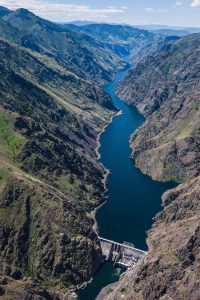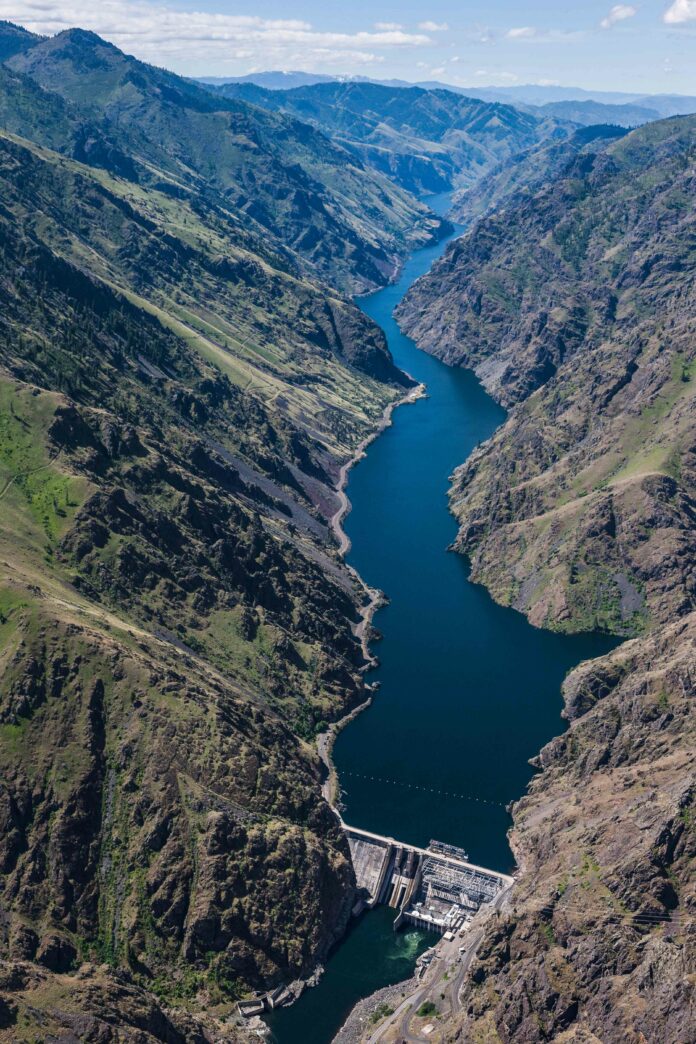By Hayden Seder

Idaho Power has reached an agreement with the states of Idaho and Oregon that will increase the number of spring Chinook salmon the company releases each year while also funding additional research and water-quality improvements in Hells Canyon over the next 20 years.
The proposed agreement enables the company to move forward in the process of obtaining a new long-term federal license for its three hydroelectric projects in Hells Canyon.
Hells Canyon is a 10-mile-wide canyon located along the border of eastern Oregon, eastern Washington and western Idaho. Idaho Power’s three hydroelectric projects on the Idaho-Oregon border, Brownlee, Oxbow and Hells Canyon dams, are collectively known as the Hells Canyon Complex. The Hells Canyon Complex generates about 70 percent of the hydroelectric power that Idaho Power provides to its customers and is a critical resource for keeping electricity prices low while reliably delivering clean, renewable energy.

Idaho Power’s federal license for the Hells Canyon Complex expired in 2005 and, since then, the company has operated its projects under a series of yearly licenses while working toward a new long-term license.
“We’ve been working on relicensing the Hells Canyon Complex for quite some time,” said Brett Dumas, director of environmental affairs for Idaho Power. “The hangup has been to get state water quality certifications from Idaho and Oregon.”
Oregon and Idaho differ in terms of fish passage issues but the recent agreement finally found common ground between the two states.
That difference has popped up in what each state requires for Idaho Power to receive water-quality certifications. Section 401 of the Clean Water Act stipulates that both states must certify, but can have different qualifications.
“In Oregon’s last certification, they required fish passage and Idaho does not allow that,” Dumas said. “Our increase of hatchery production of fish is a mitigation for Oregon being willing to take that fish passage out of their Section 401 requirements.”
Part of the agreement will result in boosting production at Idaho Power’s Rapid River Hatchery from the current 3.2 million juvenile fish to 4 million. This is in addition to the more than $400 million already proposed through the company’s Snake River Stewardship Program, a basin-wide water-quality improvement plan.
“Now both the Snake River Stewardship Program and the Rapid River Hatchery expansion will be part of our Section 401 water-quality certification,” Dumas explained. “The Snake River Stewardship Program is the largest component of our Section 401. This settlement is just a small piece to resolve the issue around fish reintroduction.”
Under terms of the proposed settlement, Idaho Power will spend around $20 million over 20 years boosting salmon production, water quality and stream improvements, and research. Already the company conducts extremely thorough research on bull trout, sturgeon, steelhead, salmon, weeds, recreational use, water-quality parameters, algae production, and resident fish like small-mouth bass. New research will be conducted as part of this agreement on adult hatchery fish that will be put in Pine Creek, an Oregon tributary of the Snake River that flows into Hells Canyon Dam in Oregon. Biologists will monitor the adult use, their spawning and their reproductive success.
“The idea is that, through the 20 years, we’ll collect enough data for states to evaluate whether they think natural reintroduction of these species is scientifically justifiable or not,” Dumas said.
The agreement is included with each state’s draft water-quality certification, which will now go through the public review process where public comment will be taken into account. A final water-quality certification will most likely be used by June of 2019. Then the process goes to the Federal Energy Regulatory Commission, which Idaho Power estimates will issue the federal license no earlier than 2022



